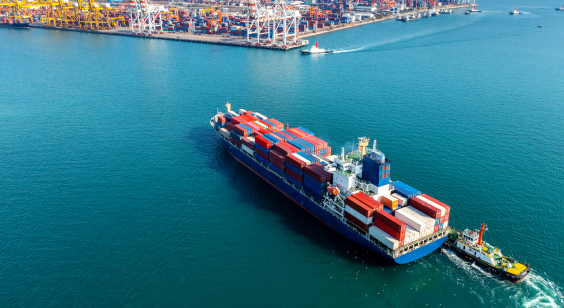

Navigating Supply Chain Disruptions: Strategies for Resilience in 2025
Three years ago, I watched a container ship the size of the Empire State Building lodge itself in the Suez Canal. For six days, the Ever Given choked global trade, delaying $60 million worth of goods every hour. But here’s what they don’t tell you: the real crisis wasn’t the blockage—it was how companies reacted. Those with agile, tech-driven supply chains pivoted within hours. Others? They’re still recovering. This isn’t just about dodging the next disaster. It’s about building a supply chain that thrives in chaos. Let’s unpack how industry leaders like Global Bridge Freight are reimagining Supply Chain Survival guide for 2025.
1. The Data Revolution: Seeing Around Corners
Gone are the days of “ship and pray.” Modern logistics demands real-time visibility—the kind that turns disruptions into detours, not dead ends.
Why it works:
- Sensors in shipping containers now predict temperature spikes that could spoil pharmaceuticals
- AI platforms like Flexport’s Supply Chain Graph map alternative routes before storms hit
- Blockchain ledgers (like IBM’s TradeLens) cut customs delays by 40% in trials
The numbers don’t lie:
| Metric | 2020 Average | 2025 Forecast |
|---|---|---|
| Predictive accuracy | 62% | 89% |
| Crisis response time | 72 hours | 4 hours |
| Customs clearance | 3.2 days | 8 hours |
“The best supply chains don’t just react—they anticipate.”
– MIT Supply Chain Management Professor Yossi Sheffi
Global Bridge Freight now embeds IoT trackers in 100% of shipments, giving clients live updates down to the pallet level. Last quarter, this tech slashed their clients’ perishable losses by 28% in Asia-Pacific routes.

2. Green Is the New Black (Box)
Sustainability used to be a PR checkbox. Now, it’s survival.
The shift:
- Carbon tariffs hit $85/ton in Germany this January
- 73% of U.S. retailers now require suppliers to disclose emission data (Statista, 2024)
- Solar-powered warehouses cut energy costs by 60% at Maersk’s Rotterdam Hub
Global Bridge Freight’s playbook:
- Biofuel fleets on all transatlantic routes by Q3 2025
- AI route optimization that balances speed and emissions
- Circular packaging partnerships with Loop Industries
Pro tip: Start small. Switching to recycled pallet wrap can cut your plastic use by 40% overnight.
3. The Art of Strategic Paranoia
Relying on single suppliers or regions? That’s like betting your business on a coin flip.
2025’s resilience rules:
- The 30% Rule: Never source >30% of critical parts from one region
- Nearshoring 2.0: Mexico now makes 24% of U.S.-bound auto parts (World Bank, 2023)
- Multi-sourcing: Apple now uses 14 display suppliers across 6 countries
Case study: When COVID froze Shenzhen, a Global Bridge Freight client shifted 50% of production to Vietnam in 11 days. Their secret? Pre-vetted backup suppliers and modular contract templates.
Your 2025 Supply Chain Health Check
| Red Flag | Green Signal |
|---|---|
| >60% single-region sourcing | 4+ production hubs |
| Manual inventory tracking | Live IoT stock alerts |
| Annual risk assessments | Quarterly stress tests |
FAQs: Cutting Through the Noise
Q: How much should I budget for supply chain tech?
A: Aim for 8-12% of logistics spend. Start with cloud-based TMS systems like Oracle’s Logistics Cloud.
Q: Are regional tariffs killing diversification?
A: Smart companies use bonded warehouses and USMCA rules to ease cross-border moves.
Q: Can small businesses afford AI tools?
A: Absolutely. Platforms like ClearMetal offer pay-as-you-go predictive analytics.
Q: How do I measure supply chain resilience?
A: Track three metrics: Recovery Time Objective (RTO), Inventory Velocity, and Supplier Diversity Index.
Q: Is sustainability really profitable?
A: McKinsey found sustainable supply chains have 15-20% lower long-term costs.
The Million-Dollar Question
When the next Black Swan event hits—and it will—will your supply chain be the rock or the house of cards?
Global Bridge Freight has helped 127 companies redesign their logistics networks this year alone. Their secret? Treating resilience not as a cost, but as the ultimate competitive edge.
Ready to future-proof your operations? Explore our custom resilience audits or chat with our AI logistics assistant—because in 2025, the best supply chains aren’t just built. They’re engineered.
“The companies that survive aren’t the strongest—they’re the most adaptable.”
– Darwin (if he ran a logistics firm)


2 comments on “Supply Chain Survival Guide”